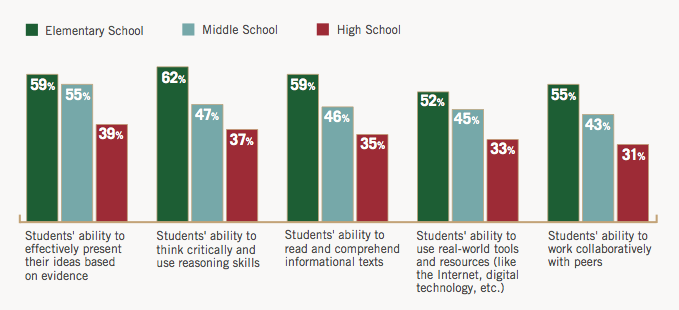Common Core…Do you cringe at the sound of these two words? Feeling overwhelmed by the sheer volume of dense and conflicting information out there about the Common Core State Standards?
conflicting information out there about the Common Core State Standards?
Common Core State Standards are academic benchmarks intended to define the knowledge and skills that high school graduates will need in order to be successful in college and careers. 40 states and the District of Colombia began implementing the common core standards in their public schools.
Common Core is the curriculum of work done by two nationwide groups, the National Governors Association and the Council of Chief State School Officers, which were tasked with evaluating why American school kids were falling behind on global education benchmarks as well as college-and-career-readiness. They found that some educators were racing through textbooks and checking off boxes without pausing to check the students understanding, so Common Core is set to correct that by requiring fewer topics but allowing students to think more deeply. This means that kids will be leading the questions and working collaboratively on projects- not just sitting quietly at their desks listening to the teacher lecture.
Common Core will affect math, English, and eventually science. In English, students can expect to see a greater ratio of nonfiction to literary texts, but that doesn’t mean literature will go by the wayside. Literary texts maybe read in conjunction with historical documents; for example, there will be more emphasis on students reading and writing in other subjects. In math, the language has changed. Common core introduces vocabulary to precisely describe thinking and problem-solving strategies in a way that others can understand. Now, please note that math standards themselves have not changed radically; it’s the addition of the eight mathematical practices that are new and can add to the difficulty of understanding what is expected of our children.
The eight practices involve making sense of problems and persevering in solving them: reasoning abstractly and quantitatively, constructing viable arguments, and critiquing the reasoning of others, modeling with mathematics, using appropriate tools strategically, attending to precision, looking for and making use of structure, and looking for and expressing regularity in repeated reasoning.
Why it works!
A fancy way of saying “thinking about thinking,” metacognition is what happens when students are asked not just for the right answers but how they got to those answers. Allison Heiduk, teacher in Vieja Valley, explained common core as teachers teaching texts, focus on comprehension. Previously, while teaching, for example a book called Frindle, a teacher might have asked her students “What did Nick do to transform the classroom into a tropical setting’? Under the new standards, the teacher might ask “What do you think Nick’s motives are? To cause trouble? Is there an educational reason? What is your evidence?” The goal is to always drive students back to the text and encourage them to formulate evidence-based reasoning- simplified, its “why” instead of just “what”.
A key trait of good problem-solving is perseverance. As it is, teachers, especially in math, focus on process. They often show students the steps-via a white board or projector to solving a particular type of problem. While teachers relish standards that let them dive deep into their subjects, Common Core also demands concrete results via enhanced standardized testing. The new test will be given on computers, which will use “adaptive technology” to increase or decrease the complexity of questions based on student’s previous answer. The theory, is that this method tests what students know rather than what they don’t.